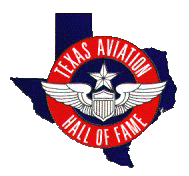At Risk
Today, flight shapes yet another metaphor. The University of Houston's College of Engineering presents this series about the machines that make our civilization run, and the people whose ingenuity created them.
How awful to fail at being a teenager! What worse horror than finding yourself tied to the ground, just when you should be taking flight! Imagine being 17, dropped out of high school, with only dying hopes of material and intellectual normalcy before you. I have some sense of that since I graduated dead last in my own high school. That's why my antennae went up at what I saw last evening.
The Lone Star Flight Museum asked us to join their volunteers at an I-Max movie about flight and the Blue Angels. As we approached the theater, a squadron of late teenagers in sweat gear ran up in formation. They waited quietly in ranks at the theater gates -- mostly boys, a few girls, looking healthy and deadly serious about their discipline. I asked the man in charge who they were.
They were the Seaborne Conservation Corps. Texas A&M University at Galveston runs a boot camp that leads to high school diplomas for at-risk youth. Most get to the program before they get in trouble with the law. They live on a ship moored in Galveston Bay and follow a regimen of study, exercise, and community service.
Now the movie begins, and I forget this youth corps for a while. I wouldn't have chosen 45 minutes of Blue Angels doing their high-speed formation flying. I want flight to be more buoyant than that. But the movie doesn't show jet planes at first. Instead, it shows birds -- geese in their incredible close formations. It shows close-ups of their flight -- the delicate micro-movement of wingtip feathers correcting and directing their motion.
The movie, it turns out, deals with something I return to like a mantra in this series -- the paradox of control and instability. Self-control means living with instability. The camera segues from delicate adjustments of birds' wings to tiny flickers of jet rudders and flaps. An eighth of an inch error in the pilots' controls spells the difference between glorious synchronicity and death.
The pilots talk about the freedom that comes with the iron discipline of their craft. They become free like a bird when they and their unstable airplane merge into a single entity.
Then the lights come on, and I look over my shoulder at those young people being redeemed to live in an unstable world. They receive a round of applause for the volunteer hours they've given the Air Museum. Afterward, I catch up with a student and ask about the program. He talks, ending each sentence with the word "Sir".
He's finishing his high-school diploma. Then he aims to enter a college with an ROTC program. He wants to be an officer. Like the Blue Angels themselves, these young people understand what that eighth of an inch miscalculation in self-control can mean. They've survived their own terrible tailspins and they'll be better equipped to live in the unstable world out there. For they have known -- first-hand -- the paradox of freedom and self control.
I'm John Lienhard, at the University of Houston, where we're interested in the way inventive minds work.
(Theme music)
The I-MAX movie was Magic of Flight, shown at the Houston Museum of Natural Science on Wednesday, January 14, 1988. The event was Volunteer Appreciation Night sponsored by The Texas Aviation Hall of Fame, home of the Lone Star Flight Museum in Galveston, Texas.
\
For more on the Blue Angels, see: http://www.BlueAngels.navy.mil/
Three other episodes deal with aspects of the Air Museum. They are 1219, 1223, and 1236.
